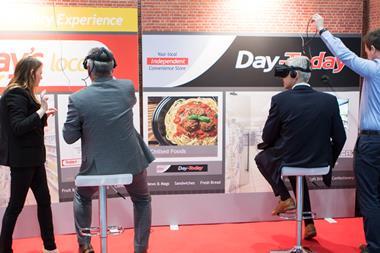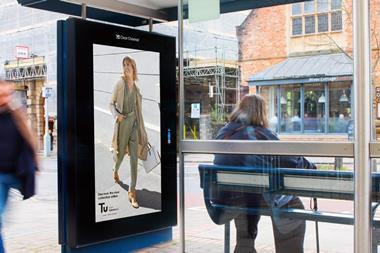
Clothing is in fashion at the supermarkets. What started out as a pioneering move by Asda - which created its own George collection in 1990 - is now big business for the big four. And they are keen to do more.
Over the past week Morrisons has expanded its Nutmeg brand to include womenswear, and Sainsbury’s has hired Mary Portas’ creative agency to develop a “long-term strategy” for growth. So can supermarkets weave more magic into their clothing divisions, or have they taken as much share as they can in the sector?
One thing is for sure, the historic snobbery over supermarket clothing has all but disappeared. For every £10 spent on clothing in the UK, £1 now goes to the supermarkets. And they do even better in volume - accounting for just over 23% of all units sold, according to figures from Kantar Worldpanel.
Supermarkets account for…
£1 of every £10 spent on clothing
23% of clothing items bought
£3.6bn of annual clothing sales
The relatively high volume to value ratio is down to supermarkets’ low prices and the fact some consumers have “pigeon-holed them into just being for essentials” says Glen Tooke, consumer insight director of the Kantar fashion team. But that hasn’t stopped them growing share, albeit at a relatively slow rate from 9.9% [52 w/e 19 January 2014] to 10.1% [52 w/e 15 January 2017]. Supermarkets did lose £60m in sales over the past year, but as Tooke says, they still performed “much better than others in the market”, with clothing multiples losing an eyewatering £450m in sales.
Now could be an opportune time for the supermarkets to broaden their appeal beyond the basics. Inflation is expected to hit disposable income and this could be good news for the supermarkets. “We know supermarket clothing picked up during the last recession because people were trading down to cut costs,” says Nivindya Sharma, a senior retail editor at fashion forecaster WGSN.
Changing market
But plenty has changed since the recession hit nearly 10 years ago. As Sharma points out, convenience was a key selling point of supermarket clothing at that time. “However that whole convenience aspect has gone out of the window with the rise in online shopping,” she says.
Plus, there is more competition in the form of the discounters - both Lidl and Aldi have upped their clothing game - and the imminent launch of Amazon Fashion. “That will be a big threat to the supermarkets over the next few years because it’s targeting the same customer base: the family shopper,” Sharma explains.
That doesn’t mean supermarkets should down their tools. For one, their distribution has also improved a great deal since the recession - the network of Tu click & collect points across Sainsbury’s stores is a case in point. And so has their marketing. Sharma recalls seeing ads for Tu in Vogue and Elle, which have succeeded in giving the collection a “more premium” feel. This could be the key to winning over the increasingly sophisticated consumer, who won’t simply be swayed by a low price tag. “Today’s customers want a good price, but also a good piece that they want to invest in. Does it tap into key fashion trends? Is it a good fit?” Those are key points, she stresses.
Look and feel
Bryan Roberts, insights director at TCC Global, says supermarkets must take heed of this mindset if they want to succeed in today’s market. This means thinking about the in-store environment as well as the clothes themselves. “In refurbished Sainsbury’s stores, the Tu section is quite impressive, whereas in others that have been less recently refurbished it’s still very industrial looking,” he says. The environment does seem to play a pivotal role - in the modern Sainsbury’s branch in Sheffield’s Crystal Peaks shopping centre, store manager Tim Morris says customers come to Tu as part of their clothes shop along with high-street brands such as New Look and M&S.
Getting this look and feel right could be the key to unlocking further sales in the clothing market, says Roberts. “In the era of savvy chic, there’s still a lot of headroom for supermarkets to grow.”



















No comments yet